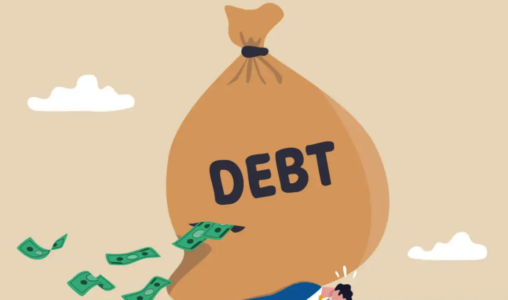How Product Teams Can Identify and Fix Costly Types of Debt: Technical, Design, Process & More

In product management, we often talk about the importance of innovation, user experience, and staying ahead of the competition. But lurking beneath the surface, product teams frequently encounter a variety of “debt” that can silently undermine progress. The term “debt” here refers to accumulated inefficiencies, shortcuts, or unresolved issues that create friction and obstacles in the product development process over time. These debts hinder a team’s ability to move forward smoothly, ultimately affecting the product’s quality, the team’s efficiency, and the business’s bottom line.
In this article, we’ll explore the different types of debt that product teams may accumulate, why they are detrimental, and, most importantly, how to manage and address them effectively.
1. Technical Debt
What It Is: Technical debt is perhaps the most well-known form of debt. It arises when engineers or developers take shortcuts in the codebase—whether due to time constraints, poor documentation, or lack of resources. Over time, these shortcuts add up, making the codebase harder to maintain and scale. Think of it as an unrefined, messy foundation that eventually makes further improvements more difficult and costly.
Why It’s Bad: The more technical debt you accumulate, the harder it becomes to add new features or make improvements without running into bugs, inefficiencies, or breakdowns. This slows down product development and creates a vicious cycle of patching problems rather than innovating. As a result, the product becomes less flexible, the team more frustrated, and business goals harder to achieve.
How to Address It:
- Code Reviews: Regular code reviews can help catch potential debt before it grows out of hand. Ensuring that code is well-written, documented, and maintainable is crucial.
- Refactoring Time: Allocate specific sprints or time within sprints for refactoring and addressing technical debt. This ensures that technical issues are resolved without taking attention away from feature development.
- Automated Testing: Implement automated testing to catch bugs early and maintain code quality, preventing further technical debt accumulation.
2. Design Debt
What It Is: Design debt occurs when the visual and user experience (UX) design of a product starts to deteriorate due to inconsistent design decisions, outdated components, or lack of adherence to a design system. This can happen when teams move fast without paying attention to long-term consistency or when changes are made in isolation without considering the overall user experience.
Why It’s Bad: Design debt leads to a fragmented user experience. Users may find the product confusing, inconsistent, or even frustrating to use. Over time, this hurts user satisfaction and can lead to higher churn rates. Additionally, addressing design debt later is costly, requiring significant redesign efforts across multiple product areas.
How to Address It:
- Design Systems: Invest in a comprehensive design system that ensures consistency in UI components, colors, typography, and overall user experience.
- Cross-functional Collaboration: Encourage collaboration between designers, product managers, and developers early in the design process to ensure that any new features or changes maintain design consistency.
- Regular Audits: Conduct design audits to assess the current state of your product’s design and identify areas that have accumulated debt. Periodically revisit key screens and flows to ensure they meet current design standards.
3. Process Debt
What It Is: Process debt occurs when inefficient, outdated, or overly complex workflows become a bottleneck for product development. It can stem from poor communication, lack of transparency, or reliance on tools and procedures that no longer serve the team’s needs. Common examples include slow approval processes, redundant meetings, or a lack of proper documentation.
Why It’s Bad: When process debt piles up, teams become slower and less efficient. Miscommunication or long decision-making chains delay product launches, frustrate team members, and lead to burnout. In worst-case scenarios, process debt can also cause a breakdown in collaboration across departments, increasing the chances of errors or missed deadlines.
How to Address It:
- Streamline Communication: Implement clear, direct communication channels that reduce ambiguity and allow for quicker decision-making.
- Process Audits: Regularly assess your team’s workflows and identify unnecessary steps or outdated tools. Where possible, remove inefficiencies or adopt new technologies that facilitate faster processes.
- Agile Adoption: Embrace agile methodologies like Scrum or Kanban, which emphasize iterative development, flexibility, and regular feedback, helping you adapt quickly to changing needs.
4. Product Debt
What It Is: Product debt arises when the product strategy and roadmap are misaligned with the actual execution. This may happen when features are built without clear alignment to user needs, or when the product tries to do too much, becoming bloated and unfocused. Another example is when previous decisions—such as prioritizing a feature that later proves unnecessary—are never revisited.
Why It’s Bad: Product debt can make the product harder to understand and use for customers, leading to a confusing user experience. Moreover, teams that consistently add features without removing redundant ones risk building a product that feels bloated and unmanageable, requiring significant investment to pare back.
How to Address It:
- Prioritize Ruthlessly: Ensure that every feature or update is tied to a specific user need or business outcome. Avoid building features for the sake of adding more and stay focused on core functionalities.
- Continuous Roadmap Reassessment: Regularly revisit and refine your product roadmap to ensure alignment with long-term strategy. Be willing to remove or de-prioritize features that no longer add value.
- User-Centric Development: Keep the end-user in mind by continuously gathering feedback, performing usability tests, and incorporating user insights into the product’s evolution.
5. Customer Debt
What It Is: Customer debt happens when a company fails to fully address customer issues, expectations, or feature requests. This can manifest as a product that no longer meets user needs, an increasing number of support tickets that remain unresolved, or poor customer satisfaction scores.
Why It’s Bad: Neglecting customer needs leads to dissatisfaction and higher churn rates. Furthermore, by allowing customer issues to accumulate, teams can quickly find themselves overwhelmed by support debt, needing to invest significant resources into making amends, reducing the time available for innovation.
How to Address It:
- Customer Feedback Loop: Implement regular customer feedback mechanisms, such as surveys, interviews, or feature requests. Ensure the product roadmap reflects the most pressing user needs.
- Customer Success Teams: Invest in a customer success team that can proactively address customer needs and prevent support debt from piling up.
- Feature Request Management: Use tools like feature voting boards to prioritize and address the most impactful customer requests.
Conclusion: Managing Debt in Product Teams
Debt, in all its forms—whether technical, design, process, product, or customer—is inevitable in any product team’s lifecycle. However, the key to long-term success is in recognizing and managing this debt early, before it spirals out of control.
By fostering a culture of continuous improvement, regular auditing, and proactive debt reduction, product teams can avoid the major pitfalls of accumulated debt. Prioritization, collaboration, and a long-term vision are crucial to maintaining a healthy, productive product development process.
Ultimately, product managers and team leads must be vigilant in monitoring these different forms of debt and act decisively to address them. Doing so ensures smoother product development cycles, better user experiences, and a more sustainable long-term strategy.







